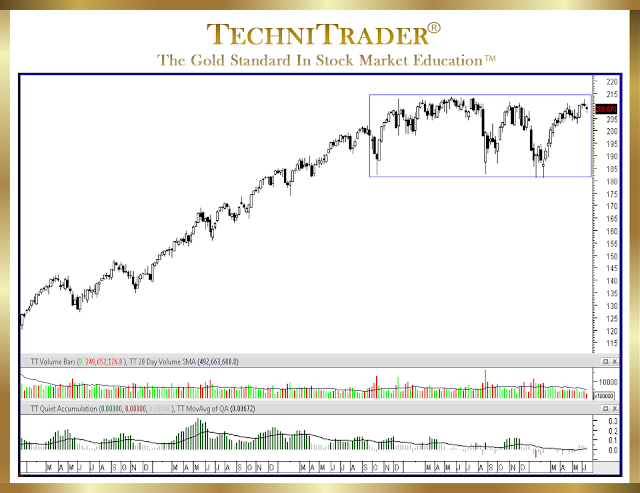How to Create and Use Center Line Price Oscillators
Most traders are very
familiar with the standard Price Oscillators which have a high and low range.
These Price Oscillators are common and found in nearly every charting program.
There are Stochastic, Williams R, Wilder’s Relative Strength Index and many
more oscillators created specifically for determining “Overbought” or “Oversold”
conditions.
Stochastic however
was written in the 1950’s which was an entirely different market than we have
today. Nowadays Technical Traders find that Stochastic tends to give a false
negative or a false positive signal, just as the stock is beginning a Momentum
or Velocity run up with exponential point gain potential. This often frustrates
traders who are still using only the older theory of Overbought/Oversold Trend
Conditions.
Today with High
Frequency Trading Firms HFTs trading stocks in massive order flow on the
millisecond scale, Price often appears “Overbought” with the standard Price
Oscillators when it is just starting a big run. Often times Overbought Patterns
shift to the “Floating Oscillation” Pattern which is a failed signal, due to
extreme momentum energy that was not present in the trading environment when
these indicators were written.
Using Price
Oscillators Enhanced for the Modern Market is a method that TechniTrader
teaches exclusively. TechniTrader shows how to create a CENTER LINE Oscillator
very similar to Volume Center Line Oscillators. Using Volume and Price
Oscillators together can be a huge benefit in entering stocks earlier out of
Bottoms and Tops, which are often flat or basing these days rather than Triple
Bottoms or other older style Bottoming or Topping patterns you may have
been taught.
Adding a relational
center line that trends with the Price Oscillator can reveal patterns in
advance of sudden big moves. See the chart example below.
Wilder’s RSI with its
one line for oscillation is the most adaptable and easiest patterns to learn,
when incorporating this kind of Center Line Oscillation into your indicator
tool set. It was written in the 1970’s and is unique for a Price Oscillator.
Instead of just calculating Overbought/ Oversold, its formula analyzes current
price action to prior price action similar to what many Volume Oscillators
track. This helps reveal Dark Pool activity which tends to precede the sudden
runs and gaps caused by HFTs. This makes it an invaluable indicator to use for
Short Term Trading.
The Floating Center
Line has a softer Oscillation, which provides pivotal signals in the Price
Patterns. This Hybrid Indicator can be applied to many other Price and Volume
based Indicators as well. This Price Oscillator Enhanced for the Modern Market
provides a more three dimensional and Relational Analysis™ that is needed
for the more complex Market Structure of today.
Oscillators can be
far more valuable and useful when adaptations and adjustments are made to the
older indicators. This gives the Technical Trader more indicator signals, more
analysis scope, and further breadth of understanding of Price action. The more
a Technical Trader UNDERSTANDS price behavior, the better trading decisions
they can make.
Using both Center
Line Price Oscillators and Volume Oscillators, enhances and improves the
overall indicator analysis for all Trading Styles. Each Trading Style will
require modifications to the settings and periods for each Indicator.
The RSI/RSI Indicator
is part of the TechniTrader Indicator Tool Set provided to Students with
instructions on how to use it with all the Variables, Combination Indicators,
Indicator Settings, and Periods. It is one of the most versatile of all the
price indicators, and is a Price Oscillator Enhanced for the Modern
Market.
Not yet TechniTrader
Students can use this theory to design their own Indicators. The ideal
Oscillators have one Oscillation Line rather than two.
Followers may request
a specific blog article topic by emailing info@technitrader.com
Trade Wisely,
Martha Stokes CMT
TechniTrader technical analysis using a MetaStock chart, courtesy of Innovative Market Analysis, LLC dba MetaStock
Chartered Market Technician
Instructor & Developer of TechniTrader Stock and Option Courses
TechniTrader DVDs with every course.
This weekly stock discussion is sponsored by TechniTrader.com a MetaStock® Partner
©2016–2024 Decisions Unlimited, Inc. dba TechniTrader. All rights reserved.
TechniTrader is also a registered trademark of Decisions Unlimited, Inc.
Disclaimer: All statements are the opinions of TechniTrader, its instructors and/or employees, and are not to be construed as anything more than an opinion. TechniTrader is not a broker or an investment advisor; it is strictly an educational service. There is risk in trading financial assets and derivatives. Due diligence is required for any investment. It should not be assumed that the methods or techniques presented cannot result in losses. Examples presented are for educational purposes only.



